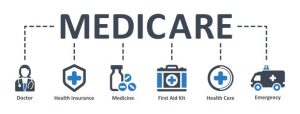Medicare Part D provides prescription drug coverage to Medicare beneficiaries. Understanding its basics, including formularies, tiers, and cost-sharing, is essential for beneficiaries to make informed decisions about their healthcare. Additionally, exploring strategies to save money on medications, such as using generic alternatives and mail-order pharmacies, can help alleviate the financial burden of prescription drugs.
Basics of Medicare Part D Prescription Drug Coverage:
Medicare Part D is offered through private insurance companies approved by Medicare. Beneficiaries can choose standalone Part D plans to add to their Original Medicare coverage or opt for Medicare Advantage plans that include prescription drug coverage.
Formularies:
Part D plans maintain a formulary, which is a list of covered medications. Formularies categorize drugs into different tiers based on their cost and efficacy. Drugs in lower tiers generally have lower copayments or coinsurance, while those in higher tiers may require higher out-of-pocket costs.
Tiers:
Typically, Part D formularies have several tiers, with Tier 1 comprising generic drugs, Tier 2 consisting of preferred brand-name drugs, Tier 3 including non-preferred brand-name drugs, and Tier 4 covering specialty drugs. The higher the tier, the higher the cost-sharing for the beneficiary.
Cost-sharing:
Medicare Part D beneficiaries share the cost of medications with their insurance plan through copayments or coinsurance. In addition to tiered cost-sharing, beneficiaries may also encounter deductibles and the coverage gap (or “donut hole”) before catastrophic coverage kicks in.
Strategies to Save on Medications:
1. Generic Alternatives: Opting for generic versions of medications whenever possible can lead to significant cost savings. Generic drugs are typically less expensive than brand-name counterparts and are subject to lower copayments.
2. Utilize Mail-Order Pharmacies: Many Part D plans offer mail-order pharmacy services, allowing beneficiaries to order a 90-day supply of medications at a lower cost compared to retail pharmacies. This option not only saves money but also offers convenience and ensures medication adherence.
3. Compare Part D Plans Annually: Beneficiaries should review their Part D plan options annually during the open enrollment period (October 15 to December 7) to ensure they have the most cost-effective coverage for their medication needs. Plans may change their formularies and cost-sharing structures from year to year.
4. Utilize Patient Assistance Programs: Some pharmaceutical companies offer patient assistance programs that provide free or discounted medications to eligible individuals who meet specific income criteria. Beneficiaries can inquire about these programs through their healthcare providers or the drug manufacturer’s website.
Understanding the basics of Medicare Part D prescription drug coverage, including formularies, tiers, and cost-sharing, empowers beneficiaries to make informed decisions about their medication needs. By implementing strategies such as using generic alternatives, utilizing mail-order pharmacies, and exploring patient assistance programs, beneficiaries can save money on their medications and better manage their healthcare expenses.




